Photo

Unsure on what foods to be eating?
Here at Active Elderly we are aware of how difficult it can be to stick to a healthy diet. If you are unsure of what you should be eating, taking a look at the food pyramid is always a good option.
The food pyramid offers a basic and easy guide to follow which will insure you are eating a healthy diet with all the nutrients you need.
Follow us on Instagram @ActiveElderly where we provide in depth information on nutrition and tips on how to snack healthy.
Comment below what helps you stick to your diet!
#ActiveEldery#ActiveElderly FitforLife Wellness Health Exercise IrishElders Sports FutureofSports#FoodPyramid#Nutrition#Health#Snacking#Wellbeing#Fruit#veg
0 notes
Photo

CYCLING FOR SENIORS
Cycling for seniors is a controversial issue; experts can’t seem to agree whether it helps or hurts. Not long ago, a doctor, Michael Yaremchuk, wrote a column in which he claimed that riding bikes for seniors wasn’t a recommended activity to stay fit because they are likely to end up injured. Is this true?
Not quite; it is a perfect case of a logical fallacy. To assume that when seniors ride bikes they will get hurt is wrong. The likely reason they may end up with injuries is inexperience, not paying attention as they ride or wrong riding techniques.
The truth is, bikes are perfectly safe for seniors and there are many examples to prove this. Benefits include strengthening muscle groups used in maintaining balance and strength (ie, quadriceps), enjoyment, autonomy, and improved cardiovascular function.
So do not be afraid to get out and cycle! Fun Fact: 31% of all registrations for biking events were by seniors aged over 55.
Like this content? Follow us and check out “ActiveElderly” on Facebook, Twitter and Instagram for more insightful information.
1 note
·
View note
Text
7 SOURCES OF HOME REPAIR ASSISTANCE FOR SENIORS! ! !
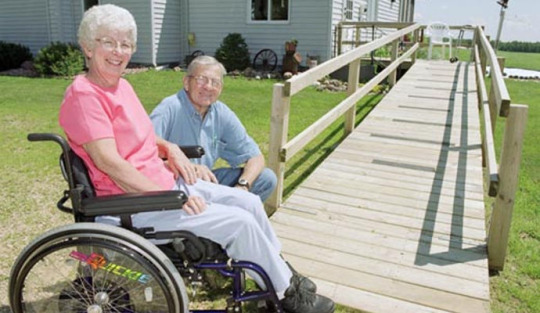
1. Area Agency on Aging
Contact the county’s Area Agency on Aging to find out about home modification and repair funds provided by the Older Americans Act.
Grants may also be available through other local government programs. Check with the city or county housing or community development department.
2. Home energy update assistance programs
The Low-Income Home Energy Assistance Program (LIHEAP) helps low-income households pay for heating and cooling energy costs, energy crisis assistance, weatherization, and energy-related home repairs.
The Weatherization Assistance Program (WAP) gives financial assistance to update homes so they’ll be more energy efficient and weatherized.
3. Rebuilding Together
Rebuilding Together is a national nonprofit organization that helps with repairs and home modifications to promote health, safety, and independence.
4. U.S. Department of Agriculture
The Section 504 Home Repair program provides grants to elderly very-low-income homeowners to fix health and safety hazards.
It also provides loans to very-low-income homeowners to repair, improve, or modernize their homes.
5. Medicare and Medicaid
Medicare and Medicaid won’t pay for home modifications, but they will pay for durable medical equipment with a doctor’s prescription.
That could include a bath transfer bench, toilet safety frame, hospital bed, walker, wheelchair, and more.
Talk with your older adult’s doctor to find out if durable medical equipment could be used to improve their health and safety at home.
6. Sliding scale and reduced fee contractor services
Some contractors are willing to do home modifications for seniors at a reduced fee or on a sliding scale, depending on their income.
When calling contractors for estimates, ask if this is an option for your older adult.
7. Insurance
Some long-term care insurance policies cover some home modifications. Check your older adult’s policy for details.
0 notes
Photo
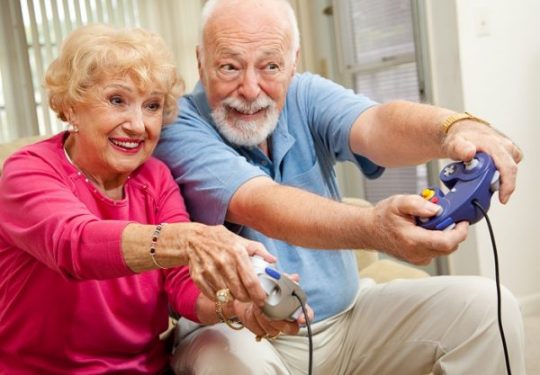
SENIORS BENEFIT FROM PLAYING VIDEO GAMES! ! !
A study conducted by North Carolina State University has shown seniors who play video games regularly or even occasionally report better overall emotional well-being. Research conducted on 140 people who are at least 63 years old or older showed interesting results which caregivers may want to use in caring for their own families.
Results of the Study
Those who participated in the study were asked how often they played games before being given a series of tests. Approximately 61 percent of respondents said they played on occasion, with 35 percent admitting to playing at least one time a week. Results from the study showed better well-being over those who didn’t play video games at all. Those who said they never played had a tendency to experience more depression and felt more negative emotions.
The paper from the study, “Successful Aging Through Digital Games: Socioemotional Differences Between Older Adult Gamers and Non-Gamers,” was published in “Computers in Human Behavior.” The National Science Foundation supported the research. Authors of the paper included Dr. Anne McLaughlin, an assistant professor of psychology at NC State, Dr. Maribeth Gandy of the Georgia Institute of Technology, and NC State Ph.D. students Laura Whitlock, Amanda Trujillo and Landon LaPorte.
According to Dr. Jason Allaire, associate professor of psychology at NC State and a lead author of a paper which describes the findings of the study, “The research published here suggests that there is a link between gaming and better well-being and emotional functioning.” He goes on to say, “We are currently planning studies to determine whether playing digital games actually improves mental health in older adults.”
Research has shown a growth in the number of seniors who are playing online games. For example, PopCap Games conducted a customer survey, which showed 76 percent of the players are women. Seventy-one percent are over 40 years of age, while almost half (47 percent) are over the age of 50. PopCap Games is the maker of Bejeweled, a popular game with older adults.
Complex strategy games have benefits for mental health, according to research. Games such as Rise of Nations helps to improve memory and enhance cognitive skills. Playing these games can train the brain to maintain focus in other areas. The key is to improve at the game and continually be learning. Ezriel Kornel, M.D., of Brain and Spine Surgeons of New York in Westchester County, says new synapses form between the neurons in the brain when it’s learning something new, and these connections can be used in other situations.
According to Anne McLaughlin, the type of game played impacts what benefits the senior experiences. Not all games will provide the same benefits. Even when gaming skills improved, they didn’t always translate to outside activities. McLaughlin says unfamiliar games have the highest benefit. “Completely new tasks form new pathways in your brain,” she said. New and challenging seems to be the right combination for people to see the effects, rather than games which are challenging but familiar.
Some games provide specific mental benefits while others focus on physical aspects or the fun factor. For instance, a recent release, The Beatles: Rock Band is at least partially geared towards baby boomers and seniors and encourages physical activity. Other games, such as Brain Age, focus more on improving memory and enhancing visual recognition skills. The ability to stay focused and think quickly is essential in games of speed or those with time limits while critical thinking is necessary for many strategy games.
If you enjoy playing video games be sure to let us know!
0 notes
Text
8 TIPS FOR ARTHRITIS PAIN RELIEF FOR SENIORS! ! !
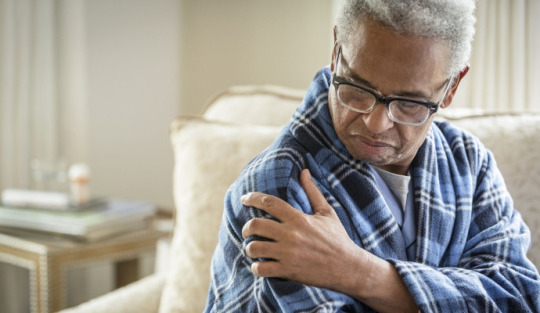
Arthritis pain can be reduced and managed
Seniors shouldn’t have to suffer with ongoing arthritis pain, especially when nearly 50% of people over age 65 have reported doctor-diagnosed arthritis.
Even though arthritis can’t be cured, it can be kept under control with a combination of simple treatments and lifestyle changes.
We share 7 tips to help reduce and manage your older adult’s arthritis pain.
It might take some trial and error before finding what works best for them, so be patient and keep trying different things.
1. Prepare ahead to work with their doctor
Before their doctor appointment, observe or talk with your older adult over a few days to figure out where the pain is, when it’s worst, and which activities they struggle with most.
Write down these observations and discuss them with their doctor.
Having specific information helps the doctor understand the symptoms, rule out other conditions that could be causing problems, and recommend treatments.
2. Use heat therapy
Heat loosens up stiff joints and muscles, stimulates circulation, and reduces muscle spasms.
Try heating pads, microwaveable heat wraps, air-activated heat patches, or pain relieving creams to figure out which solutions are most effective.
But be sure to protect senior skin from direct contact with heat packs by keeping a thin towel between the skin and heat source.
You can also make a DIY heat pack by microwaving a wet towel for 1-2 minutes. Put the hot towel in a plastic bag and wrap that with a dry towel to protect the skin – instant heat at no cost!
3. Use cold therapy
If heat isn’t doing the trick, try cold therapy.
There are a variety of handy cold wraps and pads that make it easier to keep ice on knees, wrists, and other body parts.
Cold packs may be uncomfortable at first, but they can numb deep pain. Rubbing ice cubes or a small bag of ice over painful areas also reduces swelling and inflammation.
Make sure to use a towel to prevent skin from directly touching the cold pack and take breaks after 10-15 minutes (or sooner for fragile skin) so skin doesn’t get too cold.
4. Combine heat and cold therapy
Some people get the most arthritis pain relief using both heat and cold.
Heat therapy sometimes works best earlier in the day because it relaxes the muscles around the joints.
Cold therapy at the end of the day can minimize inflammation from daily activities.
5. Move and exercise regularly
Many older adults with arthritis don’t want to move because it hurts.
But not moving actually makes arthritis pain worse, so it’s important not to stay in the same position for too long.
It may be painful to get started, but regular activity does reduce arthritis pain. Throughout the day, seniors need to move, flex, and use the joints that hurt.
Encourage your older adult to get up at least once an hour.
If they resist, be creative and invent a useful reason for them to move around or change position. Bathroom trips count too.
Adding daily exercises to their regular routine also brings greater arthritis pain relief over time.
It doesn’t matter what their fitness level is. Even slowly walking around the kitchen using a walker or going back and forth in the hallway a few times is a good joint workout.
6. Use massage
Gently massaging painful joints helps warm up and relax the area. You could help give massages or they can self-massage the areas they can reach.
It’s a great wind-down activity and could also help them sleep better.
If even gentle massage is painful, try using heat beforehand to warm the area first. Adding lotions or oils to reduce friction can also help.
7. Maintain a healthy weight
Did you know that losing just 1 pound takes 4 pounds of pressure off each knee?
Being at a healthy weight is better for joints because more body weight means more pressure on joints.
If your older adult is overweight, helping them to adopt a healthier diet and increase exercise can help them shed a few pounds and take a lot of pressure off their joints.
8. Add omega-3s to reduce inflammation
Eating fish rich in omega-3 like salmon, sardines, herring, and tuna or taking omega-3 supplements can reduce inflammation levels in the body, which helps decrease arthritis pain.
Make sure to ask your older adult’s doctor before adding any supplements in case they have negative interactions with any of their prescriptions.
0 notes
Text
8 ARTHRITIS DRESSING TIPS MAKE LIFE EASIER FOR SENIORS! ! !
Arthritis makes it harder to get dressed
Getting dressed and undressed is an everyday activity that’s often challenging for seniors with arthritis or limited mobility.
But this shouldn’t be the reason that your older adult loses independence.
Fortunately, there are simple tricks and clothing options that make dressing significantly easier.
We found a printable tip sheet from Alium Adaptive Apparel that has 8 practical arthritis dressing tips.
This advice helps you find clothing that’s easier to get on and off, learn how simple dressing aids and DIY add-ons can help, and more.
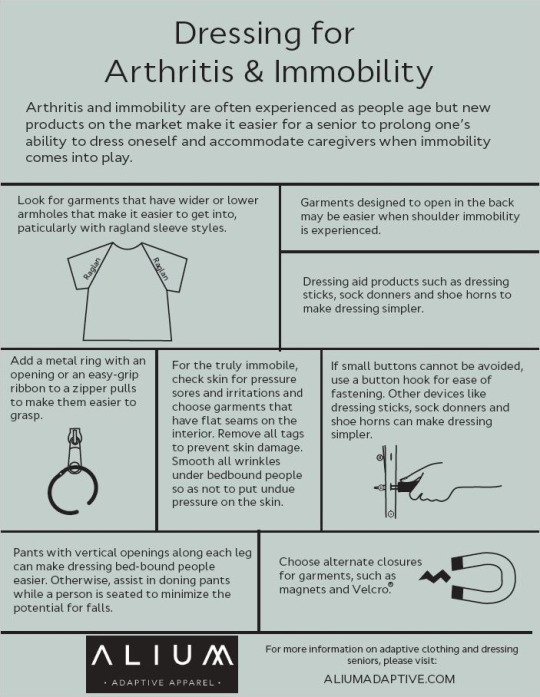
0 notes
Photo

THE IMPORTANCE OF WEARABLE TECHNOLOGY FOR SENIORS! ! !
Wearable technology like the Fitbit and Apple Watch aren’t just for the young and active any more. Increasingly, older adults are turning to smart wearable gadgets to help them live healthier, happier lives. In a 2015 study conducted by AARP, 45% of participating older adults (50+ years old) reported increased motivation for healthier living after six weeks of using a wearable activity or sleep tracker, and 67% of participants overall felt that such wearables were beneficial or of value.
Wearable tech can also provide family members and caregivers with peace of mind. Some wearables specifically designed for seniors include features like fall detection and emergency monitoring, which means independent seniors still have the freedom and flexibility to do whatever they like with an extra layer of protection in case of an emergency.
Whether you’re looking for a fitness tracker for an active, on-the-go parent or a medical alert device for an aging, independent grandparent, we hope you’ll find what you’re looking for in this short list of wearables suited for seniors.
- Garmin Vivosmart 3
- Fitbit Charge 3
- Samsung Gear S3
- Apple Watch 4 (and newer models)
If you already use any of these devices or know anyone who does, be sure to let us know!
0 notes
Text
THE BEST WAY TO IMPROVE SENIOR MOBILITY: THE SIT TO STAND EXERCISE ! ! !
youtube
This simple home exercise is the best for mobility and independence
The ability to stand up from a chair makes a huge difference in everyday life for seniors. It helps with essential activities like getting up from the toilet, out of bed, and out of a chair.
That’s why the sit to stand exercise is probably the best of the mobility exercises for seniors.
It’s a functional exercise for that exact movement and strengthens leg, core, and back muscles.
Those muscles are needed to increase mobility and independence as well as improve balance.
Plus, no equipment is needed and it can be done anywhere you can put a chair.
We found a straightforward and free video from Eldergym that shows how to do the basic sit to stand exercise as well as how to make it more challenging as seniors gain strength.
We give an overview of the exercise instructions, recommendations for how many repetitions to do, and tips on how to keep your older adult safe while exercising.
How to do the sit to stand exercise
The video demonstrates how to do the basic exercise, then adds various elements to increase the difficulty as your older adult gains strength.
Equipment needed
A sturdy chair that won’t slide on the floor
Optional for more advanced levels: a flat pillow, foam balance pad, ball/similar object
1. Basic sit to stand exercise (1 min 5 sec in video)
Scoot/walk hips up to the edge of the chair
Bring toes back underneath knees
Optional: Use arms to push off the chair or off of knees
Lean forward a little to bring nose over toes and push up with legs to a standing position
To sit, bend a little at the knees to push hips toward chair and lower the body to a seated position
Pause before doing the next repetition
Safety tip: In step 3, he mentions holding onto a walker or chair to help with standing. We don’t recommend this because pulling or pushing on a walker or cane can cause the legs to slip, which then could cause a fall. In the video, he’s doing it more safely with one hand on the chair and one hand on the walker/cane, but doing this tends to lead to unsafe habits, like using two hands to pull on a walker or cane.
2. Intermediate level sit to stand exercise (2 minutes 30 seconds in video)
Do the same steps as in the basic exercise and keep arms crossed over chest the whole time
3. Advanced level sit to stand exercise (3 minutes 14 seconds in video)
Do the same steps as in the intermediate exercise and place a relatively flat pillow under the feet to challenge balance
4. Super advanced level sit to stand exercise (4 minutes 13 seconds in video)
Do the same steps as in the advanced exercise and hold a lightweight ball (or similar object) in front of the body, about chest height
0 notes
Photo

START YOUR WEEK RIGHT!
It’s very important to attack the week and that starts with having a productive Monday!
Monday is the best day of the week and gives you a chance to set your standards for the rest of the week.
On Monday’s the team at Active Elderly like to get up early, eat a healthy breakfast, plan for the week ahead followed by some sort of exercise, mainly walking or jogging!
Let us know your Monday ritual in the comment section and follow us!
0 notes
Text
HOW TO GET UP FROM A FALL: STEP-BY-STEP GUIDE FOR SENIORS ! ! !
youtube
Prevent injury and fear with safe techniques to get up after a fall.
Prevent injury and fear with safe techniques to get up after a fall.
According to the CDC, more than 1 in 4 people age 65 and older fall each year. And, falling once doubles the chances of falling again.
Even worse, after an older adult falls, lying on the floor for a long time or getting up incorrectly could cause additional injury – even if they weren’t seriously injured from the fall itself.
For example, someone who isn’t able to get up or call for help may develop serious complications like dehydration, hypothermia, pneumonia, or pressure sores.
How to get up from a fall (no injuries)
Stay calm and still. Don’t move for a few minutes because moving too quickly can cause more harm.
Figure out if you’re injured. Slowly move hands and feet, arms and legs to check for pain.
If there are no injuries, slowly roll onto your side, starting the movement with your head and moving down your body toward your feet. Take a moment to rest.
Slowly push up into a crawling position and crawl slowly on hands and knees toward a sturdy chair or piece of furniture. Don’t rush and rest as needed. Place your hands on the seat of the chair, one at a time.
Supporting yourself with the chair, bring your strongest leg up to a 90 degree angle by putting that foot flat on the ground. The other leg stays in kneeling position. Slowly push up to standing using both arms and legs.
Slowly turn around and lower yourself onto the chair. Sit and catch your breath for a few minutes before doing anything else.
How to call for help when there are injuries
Stay calm and rest for a few moments. Figure out what parts of your body are injured.
If you have one, use an emergency medical alert device or mobile phone to call 911 or a family member for help. Tell them about your injuries.
If there’s a pillow nearby, put it under your head. If there’s a blanket or some clothing nearby, use it to keep yourself warm while you wait for help.
If you don’t have a medical alert device or a phone nearby, start yelling for help. If you can’t yell, grab something nearby and use it to bang on the floor or on nearby furniture to make noise and attract attention.
0 notes
Photo

STAYING ON TRACK
The hardest part about getting active is getting started, the second hardest is staying on track. When we say getting active, we don’t mean just going to the gym. We mean whatever you do to stay active, a trip to the gym, a walk with your dog, or a date with your treadmill. It’s easy to skip a workout to go out with friends, or you’re just too tired at the end of the day to possibly fit it in. But with a little planning and some support, you can stay on track.
Have others keep you accountable
This could mean meeting up with a walking group or attending a yoga class with a friend. Don’t have any friends close by? Or maybe you prefer to workout alone. Start a text group of like-minded friends or family to keep each other motivated and accountable.
Focus on your motivators
Why did you start exercising in the first place? Active Elderly feel very strongly about finding a motivator other than losing weight. If your goal is to lose 10 pounds and you do, then what? Are you going to keep exercising if you’ve achieved your goal? Focus on how good you feel after you’ve exercised. Think about the things you can do or hope to do by keeping active and in shape, such as keeping up with your teenagers all day at the amusement park or being able to spend an hour working in your garden. Consider the health benefits, lower blood pressure, or possibly even being able to get off medications. Focus on these things and make them your internal voice in your head when you are considering skipping it today.
Plan ahead
Sure the best-made plans can get screwed up but if you plan your workouts into your week you are much more likely to fit them in than if you wait for your schedule to open up. Planning ahead helps to stay on track.
Hopefully, the more you exercise and experience the benefits of regular physical activity the easier it is to stick with it. And if you do get off track due to illness, vacation, a crappy week or even a weekend bender don’t beat yourself up. Just get back to it and pat yourself on the back for not quitting.
What are some of your tricks for staying on track with your workouts? We would love to hear them.
Like this post? Click the follow button to see more like it.
#ActiveElderly#FitForLife#SeniorFitness#GoodHabits#StayingonTrack#Longevity#healthylives#FitnessTips
0 notes
Photo

My Wife says i should join a gym...
Over my dad body!!!
Lets talk about the importance of aerobic exercises and why you should do them!
Aerobic exercise describes any exercise that uses your arms and legs for a continuous period of time such as walking, cycling, swimming or a cardio exercise class. Aerobic exercise strengthens our heart and lungs. This type of exercise has consistently been shown to positively affect our cardiovascular health; improving blood pressure, blood sugar control, cholesterol levels and body weight. It is also associated with a whole host of other health benefits including a significant reduction in the risk of bowel and breast cancer.
In order to avail of these health outcomes it is important that you adhere to what we refer to in exercise as the FITT guidelines:
Frequency (How many days per week do I need to engage in this type of exercise)
5-7 days/week
Intensity (How hard do I need to be working when I’m exercising)
Moderate
Time (How long should I exercise for)
30-60 minutes per session. This is a target. If you are currently inactive, begin with 10 minutes and build up.
Type (Examples of aerobic exercise)
Regular, purposeful exercise that involves major muscle groups and is continuous and rhythmic in nature (i.e. walking, cycling).
These guidelines tell you how many days a week you should be doing aerobic exercise and also how long each aerobic session should last. Most importantly the guidelines state that your aerobic exercise should be of a moderate intensity. A rule of thumb is that you can say a sentence but perhaps not engage in a full conversation when you are completing your aerobic exercise.
Let us know in the comments or dm us if you would like for the experts here at Active Elderly to do a free Aerobic workout!
0 notes
Photo

STAYING HYDRATED WHEN EXERCISING IS SO IMPORTANT! ! !
Fluids keep your body hydrated; without them your body won’t function at its best.
If you don’t drink enough fluid:
Your body temperature and heart rate may rise. That’s because when the total amount of water in your body is below normal level (hypohydration) your body can’t properly regulate heat.
You may feel more fatigued than usual.
You may not be able to think clearly – your motor control, decision-making abilities and concentration may be impaired.
Your body’s functions may slow down – this includes gastric emptying, so you may feel uncomfortable in your stomach.
Your performance in sport or exercise may not be as good as it could be. The impact is even worse when you’re active and dehydrated in hot conditions.
The simple solution is, of course, to drink enough fluids when you exercise. Make fluid replacement a priority when you’re physically active. Drinking enough fluids will help to maintain your concentration and performance, increase your endurance, and prevent excessive elevations in heart rate and body temperature. It’s all about sufficient hydration.
0 notes
Video
It's all about getting the balance right. We need to adhere to a nutrition plan and exercise programme to be successful, plan ahead and everything in moderation.
Follow, Like and Share this post!
#ActiveElderly#FitforLife#nutrition#food#exercise#longevity#health#strength#balance#calories#balanceddiet#geriatrics
0 notes
Text
HOME DEMENTIA EXERCISE PROGRAM INCREASES ABILITIES AND IMPROVES SYMPTOMS ! ! !
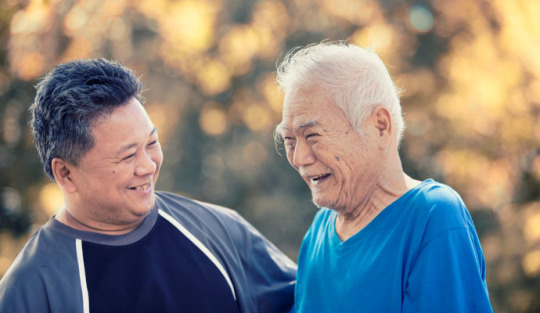
1. Dementia exercise program improves cognitive symptoms.
A dementia exercise therapy program that can easily be done at home improves abilities and quality of life in seniors with Alzheimer’s or dementia.
Love to Move is a chair-based exercise program designed for seniors with dementia.
It was developed by the British Gymnastics Foundation (BGF) and inspired by successful programs in Asia.
It’s been shown to improve cognitive function, reduce depression, improve balance, and improve ability to perform everyday tasks.
We explain what the Love to Move program is and how the exercises improve dementia symptoms.
We also share the free instruction booklet BGF created so you can do these simple exercises with your older adult.
2. How the Love to Move program helps seniors with dementia?
Experts in Japan created chair-based dementia exercise programs to improve the lives of nursing care residents with dementia.
The simple exercises were based on cognitive stimulation, memory arousal, and music.
The results were so positive that the program won full state funding and is now used in every care home across the country.
The BGF was so inspired by the Japanese program’s success that they worked with the program leaders to design UK-based dementia exercise programs using those same principles.
BGF’s pilot program showed amazing results in seniors with dementia:
* 71% of participants had noticeable physical improvements
* 86% were socializing more with other residents and staff
* 93% seemed happier and more settled
* 100% were easier to connect with
3. Why exercises for dementia improve ability to perform everyday tasks?
The Love to Move program is based on the concept of performing different movements with the right and left sides of the body at the same time.
Basically, it’s like patting your head and rubbing your stomach at the same time.
These types of exercises take a lot of concentration.
When practiced, they increase the ability for the right and left sides of the brain to process information independently of each other.
This increases the number of neural connections and increases cognitive ability.
The Love to Move exercise program has increased seniors’ ability to perform everyday tasks like feeding themselves, engaging in activities, and communicating with family and friends.
Coordination and ability to sit unassisted in a chair was also improved.
*** Print or save the free dementia exercise program booklet: https://britishgymnasticsfoundation.org/wp-content/bgfdoc/index.php
0 notes
Text
Seated stretching improves senior health.
youtube
Chair exercises like stretching are perfect for seniors because they can be adapted for physical limitations, minimize the risk of injury due to falls, and still give health benefits.
The only equipment needed is a sturdy, non-slip chair.
Stretching helps ease joint pain and muscle aches and also improves mobility, flexibility, coordination, and circulation.
On top of the physical benefits, it also reduces stress and boosts mood.
We found a simple and quick 4 minute routine of seated stretching exercises for seniors.
This free video takes seniors through 12 gentle stretches that ease tension and improve flexibility throughout the body.
Follow along with the 12 seated stretching exercises for seniors
1. Begin by sitting with good posture in a sturdy, non-slip chair (20 sec in video)
The ideal posture is to sit upright, engaging abdominal muscles, with feet on the ground, knees over toes, thighs parallel to floor, and hips aligned with legs.
Not everyone will be able to use this ideal position due to physical conditions, surgery, or injuries.
To prevent pain or injury, just do the best possible and focus on keeping the body aligned and comfortable.
2. Overhead stretch (30 sec in video)
Take a deep breath in and stretch arms up toward ceiling. Exhale and bring arms back down.
3. Upper back stretch (44 sec in video)
Make a circle with the arms and drop the chin down toward the chest. Push toward the opposite hand and focus on spreading the shoulder blades apart.
4. Chest stretch (1 min 12 sec in video)
With arms at sides, focus on pulling the shoulder blades together and down toward the ground.
5. Side stretch (1 min 38 sec in video)
Slowly lean over to one side without collapsing the upper torso, keeping abdominal muscles engaged. Repeat on the other side.
6. Deeper side stretch (1 min 54 sec in video)
Reach one arm up and over while leaning the body to the side to get a deeper stretch. Keep the arm by the ear. Repeat on the other side.
7. Spine twist (2 min 11 sec in video)
Cross arms over chest and slowly twist upper body to one side. Try not to move the rest of the body. Repeat, twisting to the other side.
8. Back of thigh stretch (2 min 40 sec in video)
Scoot forward on the chair and sit a bit closer to the edge. Extend one leg straight out in front with heel of the foot on the ground, foot flexed.
Slowly and gently, bend forward at the hip, keeping the back straight. Repeat on the other side.
For a deeper stretch, extend arms toward toes while bending forward at hip.
9. Ankle circles (3 min 27 sec in video)
Sit back in the chair again and lift one foot up off the ground.
Slowly circle the ankle in one direction and then in the other direction. Repeat on the other side.
10. Shoulder rolls (3 min 42 sec in video)
Bend arms at the elbow and roll shoulders back, making slow circles in the air with elbows.
Then, make the same motion, but this time, the circles would be going forward.
11. Head circles (4 min in video)
Turn head to look over one shoulder. Very slowly, drop the chin and circle the head around and bring it up to look over the other shoulder.
Then drop the chin again and circle the head back to the original side.
0 notes
Text
FREE INFORMATION: 6 chair exercises in an easy 10 minute routine.
Today we will introduce simple 10 minute chair exercise routine for older adults.
youtube
Today we will introduce simple 10 minute chair exercise routine for older adults.
The only equipment that’s needed is a sturdy chair with back support, an optional resistance band, and optional ankle weights.
Note: The chair shouldn’t have arms and shouldn’t easily fold, roll, slide, or be unsteady.
These seated exercises help seniors:
1. Build or maintain muscle
2. Get heart rate up
3. Improve blood circulation
4. Increase flexibility
5. Increase range of motion
Preventing injury is the top priority
It’s still possible to fall out of a chair and get injured so it’s important to make sure your older adult is steady on their chair and able to handle these exercises.
The first few times they try new exercises, ask them to take it slowly and not overexert themselves.
And stand close by until you’re both confident that they can safely do the movements on their own.
0 notes